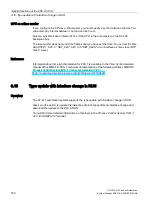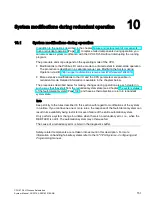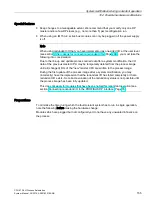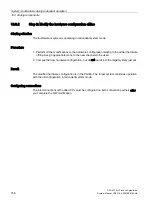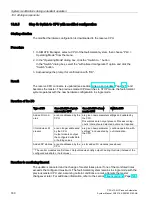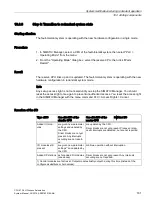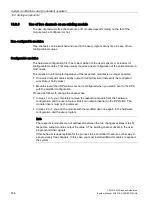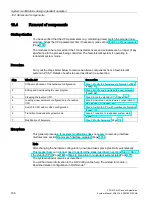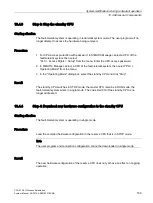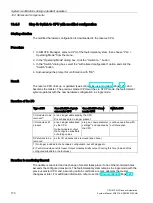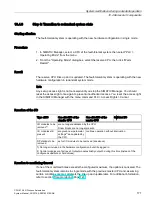
System modifications during redundant operation
10.3 Adding components
CPU 410-5H Process Automation
156
System Manual, 09/2014, A5E31622160-AB
10.3
Adding components
Starting situation
You have verified that the CPU parameters (e.g., monitoring times) match the planned new
program. Adapt the CPU parameters first, if necessary (see Chapter Editing CPU
parameters (Page 174)).
The fault-tolerant system is operating in redundant system state.
Procedure
Carry out the steps listed below to add hardware components to a fault-tolerant system in
PCS 7. Details of each step are described in a section.
Step
What has to be done?
See Chapter
1
Modify hardware
Step 1: Modify hardware (Page 157)
2
Modify the hardware configuration offline
Step 2: Modify the hardware configuration offline
(Page 158)
3
Stop the standby CPU
Step 3: Stop the standby CPU (Page 159)
4
Download new hardware configuration to the standby
CPU
Step 4: Download new hardware configuration to
the standby CPU (Page 159)
5
Switch to CPU with modified configuration
Step 5: Switch to CPU with modified configuration
(Page 160)
6
Transition to redundant system state
Step 6: Transition to redundant system state
(Page 161)
7
Modify and download the user program
Step 7: Modify and download the user program
(Page 163)
Exceptions
This overall sequence for system modification does not apply in the following cases:
●
For use of free channels on an existing module
●
For adding of interface modules (see Chapter Addition of interface modules (Page 165))
Note
After changing the hardware configuration, you can have the download operation run
essentially automatically. You then no longer have to perform the steps described in
Chapters Step 3: Stop the standby CPU (Page 159) to Step 6: Transition to redundant
system state (Page 161). The system behavior remains unchanged as already described.
You will find more information in the HW Config online help, "Download to module ->
Download station configuration in RUN operating state".









